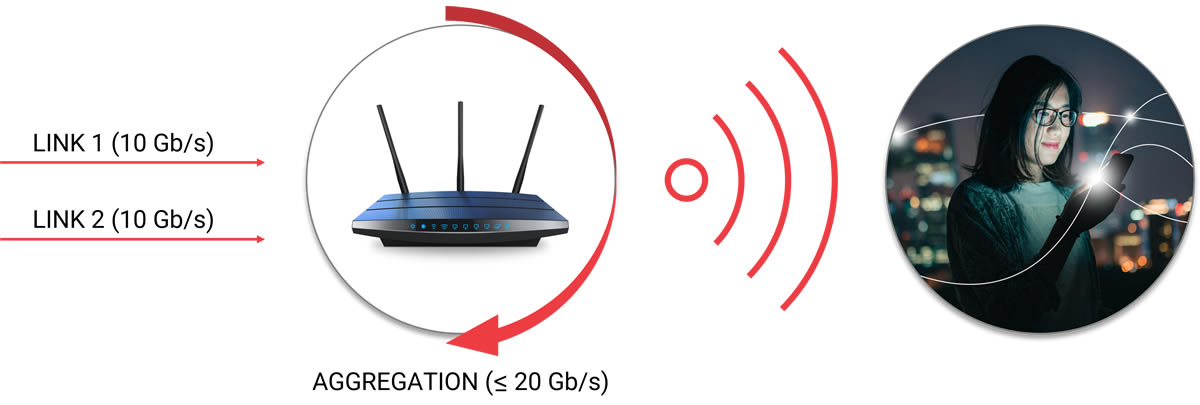Wi-Fi 7 is here – But what does that mean?
Filed under: WiFi
Comments: Comments Off on Wi-Fi 7 is here – But what does that mean?

Current estimates are that most (50-80%, depending on the country) of the world’s mobile data is carried on Wi-Fi devices. Driven by the exponential demand for throughput in support of a range of applications in our professional and personal lives (e.g. remote working and conferencing, Telehealth, IIoT/industry 4.0, IoT, AR/VR, wireless gaming, 4K and 8K video streaming to name a few), and as a result the specification of high performance network cabling supporting access layer switches and uplink connections has never been more critical to deliver the right capacity for next generation wireless access points.
With reports of the first Wi-Fi 7 routers already being released onto the market (well ahead of the projected standard release in 2024) it’s clear that for those organizations already planning future green-field and retrofit projects that Wi-Fi 7 is already something to be included in your design considerations.
What will be the technical advantages of Wi-Fi 7?
For the uninitiated, the IEEE is already actively working on the development of a new standard IEEE P802.11be™ “Enhancements for Extremely High Throughput (EHT) Wireless LAN” otherwise known as Wi-Fi 7. With an associated theoretical (46.1 Gb/s upstream and downstream combined) and “real world” (> 20 Gb/s upstream and downstream combined) maximum throughput, Wi-Fi 7 is intended to address your increasing application demands through a number of enhancements.
Most significant among these features is “multi-link operation” which allows for simultaneous transmission and reception enabling greater throughput and improved latency. Also, under consideration are expanded frequencies (including 6GHz), wider channels (including 320MHz) and better modulation (4096-QAM) – all while maintaining backwards compatibility with 11a/b/g/n/ac/ax Wi-Fi networks.

What does Wi-Fi 7 mean for the cabling infrastructure?
While IEEE P802.11be is not projected to be released until 2024, as we’re seeing, some of the key characteristics are sufficiently stable for some vendors to start releasing pre-standard Wi-Fi 7 devices, a trend that the market has also seen ahead of other Wi-Fi releases for 5, 6 and 6E. With preliminary throughput of > 18 Gb/s, these devices incorporate 2 x 10GBASE-T ports using link aggregation to support network uplinks.
In preparation for these higher speeds, multiple telecommunications standards, including ANSI/TIA-568.1-E, specifically recommend deploying two category 6A or higher cabling runs to each Wireless Access Point (WAP). Only class EA/ category 6A and higher rated network cabling provides guaranteed support of 10GBASE-T over all installation environments and channel topologies up to 100 meters. Additionally, the use of shielded cables such as Siemon’s category 6A and category 7A ranges, in conjunction with our connectivity solutions which incorporate our innovative PowerGUARD® technology, provide the optimal approach when looking to support remote power delivery used to power these next generation Wi-Fi devices.
How can you best prepare for Wi-Fi 7?
The technology already exists to support your organization deliver exceptional Wi-Fi, and the right selection will lay an effective foundation for migrating to Wi-Fi 7 when the time is right for you. No matter where you are today in your Wi-Fi journey our team of technical experts are on-hand to support you in navigating your options. Don’t hesitate to get in touch.
